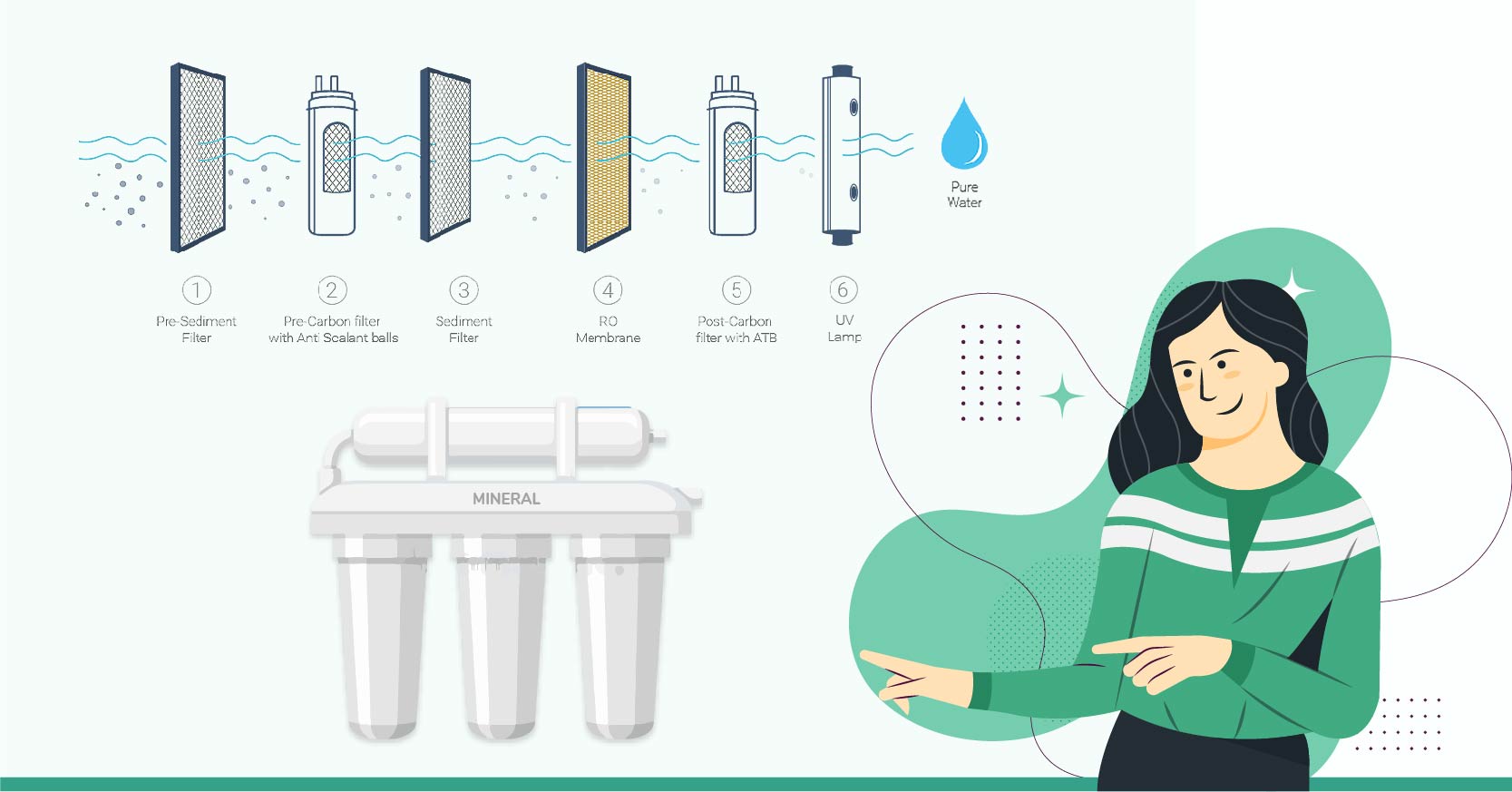Waterborne diseases cause thousands of fatalities in India every year. While the government provides us with clean water for our daily needs, it is not suitable for drinking purposes. One needs to adopt water purification methods or RO to consume water without fear of diseases, chemicals, odors or noxious elements.
Simple methods such as where one uses a sieve at the valve are not sufficient to filter out clean drinking water.
Boiling water is cost-effective as compared to buying and installing water filters. Boiling water at a high temperature removes bacteria, virus and chemical additions from the water. However, dead micro-organisms and impurities settle at the bottom of the water. To remove these impurities, one must strain the water through a microporous sieve.
As boiling water is a labor and time-intensive process, there is a need to install a water filtration system in the house.
Many filters look similar but have different characteristics. Therefore, it is important to understand the differences to select a water filter most suitable for your needs:
- There are significant differences in the filtration quality of the water depending on various types and brands of filters available.
- NSF certification does not guarantee or imply the elimination of any particular contaminant.
- Some filters use multiple technologies to eradicate contaminants, while others may use a single type of technology.
This blog’s purpose is to introduce the most common types of water filtration processes as detailed below:
-
Distillation
Distillation involves evaporating water by boiling it to extremely high temperatures. The water vapor that arises from this method is condensed back into filtered, liquid water.
Distillation removes minerals, bacteria, and chemicals that have a high boiling point. However, as the water boils at 100°C (212 °F), this method doesn’t remove the impurities that have a different heating point. Volatile organic chemicals such as herbicides, pesticides, and many more may not be filtered via this process.
-
Reverse osmosis (RO)
Reverse osmosis filters water through a semi-permeable membrane in order to stop larger impurities and more harmful molecules from entering. The membrane acts as an exceptional filter as the process involves pushing the impure water against its natural direction, which requires more energy. Therefore, the process needs power-driven pumps to function.
Reverse Osmosis can only block molecules that are bigger than water. It is suitable for removing chemical pollutants such as chloride, chromium, copper, sodium and lead. Reverse osmosis systems eliminate more contaminants than carbon, making them a prevalent choice for many consumers. However, ROsystems do not eradicate dissolved gases like hydrogen sulfide, few insecticides, and herbicides. Carbon filters combined with RO purifier gives better result in cleaning impurities.
-
Activated Carbon Filter
Activated carbon filtration is great at removing contaminants like chlorine-based compounds, few pesticides and industrial elements. Galvanized carbon used in this process is an absorbent form of carbon, based on charcoal. This process is normally used in many home water filtration systems. Carbon eliminates impurities by chemically bonding to the water that is discharged into the system. It includes using the active absorption aptitudes of carbon in reducing contaminations and also eliminates bad odors and tastes. It is significant to note that carbon filters do not have the ability to eliminate inorganic pollutants such as nitrates, fluoride, sodium and arsenic.
-
Ion Exchange
Technology works to soften water by using a resin to replace detrimental ions with ones that are less damaging. Ion exchange is frequently used to soften water since it has the ability to exchange calcium and magnesium with sodium. In this process, the ion-exchange filter efficiently splits apart the composites around it.
There is still a need to go through an additional filtration to be able to consume this water. In order for this purification system to work for a prolonged period of time, the resin must be often “invigorated” with harmless replacement ions.
-
Activated Alumina Water Filter
Activated alumina targets fluoride in drinking water. The filter is built of aluminum oxide (Al2O3), a similar element to sapphire and ruby without any of the coloring impurities. Activated alumina removes fluoride, arsenic, thallium and selenium from drinking water. With several pores on its surface, the alumina can condense up to 99% of fluoride absorptions in the normal fluoridated water.
It is important to acknowledge and understand that a good water filtration system is the first line of defense when it comes to your daily water requirements. Maintenance and service of RO on regular basis is mandotary for healthy drinking water.
Therefore, if your RO is due for maintenance, download the “OneDios” app and generate a RO service request in a few clicks. The OneDios app provides an end to end solution for all your RO service and repair related issues, without having to call various people or seek phone numbers. It also keeps a track of your previous RO service history. Open the One Dios app and schedule the subsequent service of your RO or warranty complaint on priority. We undertake AMCs of various brands like ACROMEC RO, AO SMITH RO, LIVPURE RO AQUA FRESH RO, AQUA GUARD RO, EUREKA FORBES RO, etc. OneDios now covers over 1350 cities in India.
Download the OneDios app or Visit the OneDios website to book a service.
